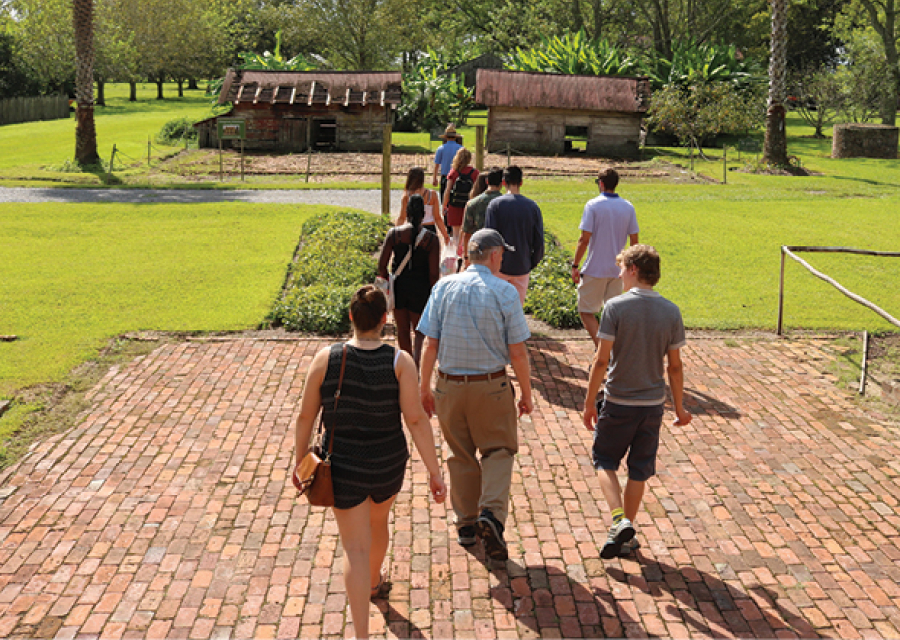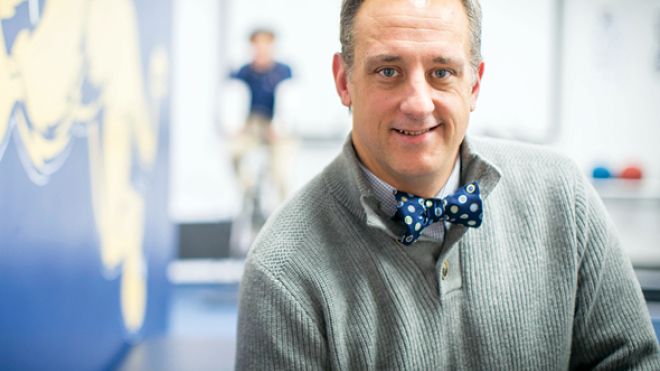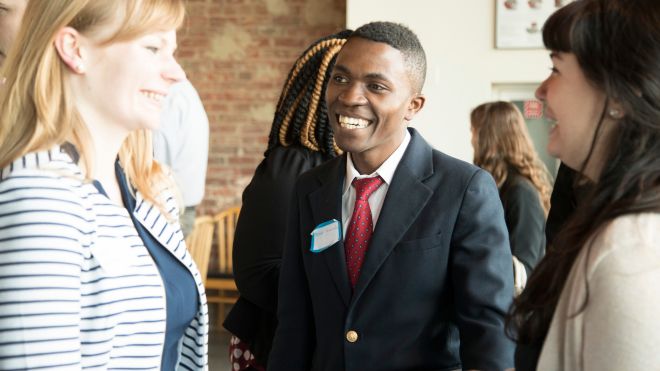
On the Laura Plantation on the west bank of the Mississippi River, at the end of our guided tour, we were led to some slave cabins. At those cabins, we learned that after the Emancipation Proclamation many former slaves stayed. However, they were paid in tokens that could only be used at the general store owned by one of the ‘big house’ family members. The tokens that workers were paid rarely amounted to enough money and they were forced to take on debt. The people were not free to leave the plantation until they bought out their debt, which was passed down by generation. It was revealed that people still lived in those cabins in the 1970s.
That’s how Matthew J. Tomasulo ’20 recounts his visit to Louisiana’s Laura Plantation. Built in the early 19th century, the property was just one stop during a three-day trip to the Bayou State organized by Bruce Dierenfield, PhD, professor of history and director of the All-College Honors program.
The trip was part of a new interdisciplinary course called Plantations, Ghettos, Prisons, which uses readings, multimedia presentations, guest lectures and field trips to highlight the African-American experience from the 18th century to the present. Students study three successive examples of enforced confinement: the plantations of the antebellum South, the urban ghettos that resulted from black families migrating to northern cities in the 20th century, and the modern prison system.
They also learn about the traditions that have shaped African-American culture. The goal is to help students understand the enduring stain of racism through the lens of history.
“As a historian who has benefited from ‘white privilege,’ I will, of course, never fully understand the burden of race but I think it is important to offer carefully conceived courses that deal with diversity,” Dierenfield explains.
The Louisiana trip included stops at four other former plantations, most notably the Whitney. Built by a family of wealthy German immigrants, the Whitney was once a prosperous sugarcane farm. By late 2014, it was transformed into a unique museum whose emphasis on slavery immediately set it apart from other historic plantation sites.
Rather than showcasing the elegance of the “big house,” the Whitney tells the story behind the property from the perspective of the slaves. Museum highlights include two original slave cabins and replicas of other slave quarters. Detailed artwork and first-person narratives bring the transgressions of the past into sharp focus. Sculptures of children are a haunting memorial to the youngest victims of American slavery.
The group also visited the Louisiana State Penitentiary, better known as Angola State Prison. For Meighan C. Murphy ‘21, it was the guided tour of the nation’s largest maximum-security prison that made the deepest impression.
“It was amazing how concerned inmates were with getting an education and how they talked about faith like it was the only thing that allowed them to stay hopeful in their situation,” she explains.
Murphy, who plans to pursue a career in medicine, is determined to apply the knowledge she gained from the class. “The black community has had its trust broken by the medical profession before and there is good reason for this distrust. I'd like to spend my career rebuilding that trust.”
For Dierenfield, a course such as Plantations, Ghettos, Prisons reflects his lifelong commitment to scholarship and teaching, even when the lessons are painful and offer no easy answers.
“I hope students will see that America's promise of equality for all is far from being fully realized,” he says. “I hope, too, that the students in this course will heed the call of Supreme Court Justice Thurgood Marshall, who said, ‘Where you see wrong or inequality or injustice, speak out, because this is your country. This is your democracy. Make it. Protect it. Pass it on.’”



